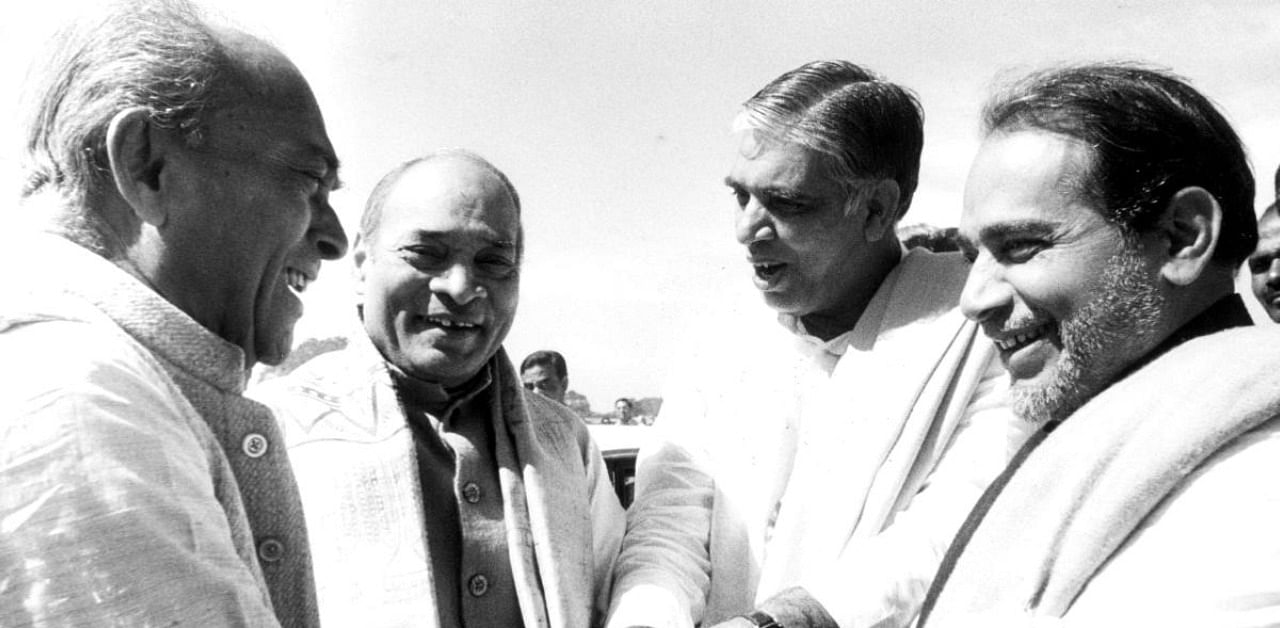
Karnataka is a pioneer when it comes to equitable development. Right from the Land Reforms Act, passed by the Devaraj Urs government in the 1970s, implementing the 73rd constitutional amendment in 1993, the Right to Information Act in 2000 and the specific allocation for SC / ST development in 2017, the state’s policies have been forward-looking and progressive.
The struggle for the Right to Information in India began with Aruna Roy and Nikhil Dey’s leadership in Rajasthan in the early 1990s.
Sustained pressure by civil society organisations, persuasive articulation of Sonia Gandhi-led National Advisory council resulted in the UPA government enacting the Right to Information
Act 2005.
Interestingly, Karnataka’s legislation of the Right to Information Act in 2000 took place well before the national law was passed.
The months before the approval of the Bill in Karnataka, I set up extensive preparatory Round Tables with reputed Right to Information (RTI) activists from across the country, as well as senior journalists and pubic intellectuals in the state.
The then chief minister, S M Krishna, backed these efforts. Yet, after the Bill was discussed in both the Houses, a few senior ministers felt it was far too liberal.
A bold provision — not found in any of six other states’ RTI law — “Information relating to Cabinet papers including records of the deliberations of the Council of Ministers, Secretaries and other Officers” also might have caused anxiety.
It was brought before the Cabinet again.
The defence of the Bill this time around was also helped by the chief minister’s humour. He said, “We had asked the professor to provide for transparency, but he has reduced us to nakedness.” The Bill became an Act.
How is it working?
Across the country, RTI activists, civil society groups and organisations have highlighted shortcomings in the functioning of commissions, even irregularities on the part of several Information Commissioners.
The common complaints are: An absence of punctuality in attending commissions, selective hearing of cases, inadequate number of cases heard, adjournments for months on end, corruption and more.
Sadly, the Karnataka State Commission takes the cake for disreputability. The 2005 RTI Act spoke only of ‘salaries and allowances payable’ to the commissions (including the Chief Information Commissioner) at the national and state level and doesn’t refer to any pension at all.
Yet, the honourable commissioners got together to pass a resolution to entitle them to a pension equivalent to that of the Chief Secretary, even if they served for only 30 months, the full tenure being 5 years.
They also exercised their political clout to get the government of the day to pass their proposal. To cap it all, among the members of the Commission were a dentist and an anesthesiologist.
Promoting SC/ST development
The strategy of the Scheduled Caste sub-plan, evolved in 1979, was to promote development through beneficiary–oriented programmes to raise income and create assets. Infrastructure development to provide drinking water, housing and create opportunities for educational and social development was also
planned.
However, the objective has not been realised even after several decades. In Karnataka, more than 50% of the SC, ST community have been living below the poverty line in both rural and urban areas.
Inadequate funding for the gigantic task at hand as well as the uneven commitment of the bureaucracy are mainly responsible for such a situation.
The Siddaramaiah-led government’s amendment of the Karnataka SC sub-allocation Act 2013 and Tribal sub-allocation Plan 2017 enabled allocation of budget strictly in proportion to the population of SC/STs (24.10% of state’s population).
The allocated funds are non-divertible and focus on the individual as well as community development programmes.
Section 13 of the amended Act enables carrying over the unspent amount to the next financial year, but not thereafter. There is also a powerful disciplinary/penal action, the latter carrying a maximum imprisonment of six months of the officers guilty of neglecting their mandated obligations.
Panchayat raj
The epoch-making 73rd Amendment to the Constitution also provided for reservation of seats to SC and ST communities on the basis of their population and reserved seats for 1/3 of women from these communities.
One-third of the total number of offices of chairpersons in all tiers of Panchayats is reserved for women.
In 1983, the late Chief Minister Ramakrishna Hegde had broken new ground in grassroots governance and Karnataka’s legislation furthered that by providing reservation for SC, ST and women.
The result of the Constitutional amendment and, prior to that, Hegde’s initiative, is that over one lakh women are now elected representatives.
A common platform is thus created for women to raise issues of livelihood, social and political matters.
Such a change in a caste-ridden, patriarchal society is itself an achievement. Women can excel in governance with targeted training and adequate information on the legal provisions of the Act.
(The author is former professor at IIM-Bangalore and was a minister in the Karnataka government)